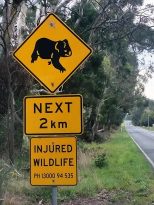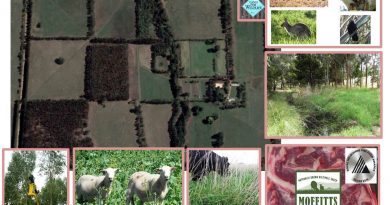Victoria’s rural road speed guidelines ignore wildlife existence
Comment by Patrick Francis
Wildlife road kills and injuries as a result of collisions with vehicles plus danger to pedestrians and bike riders on minor rural roads are set to increase in Victoria. That’s because the state government department responsible for road speed limits ignores coexistence of wildlife and the department responsible for wildlife protection ignores vehicle speed as a contributing factor.
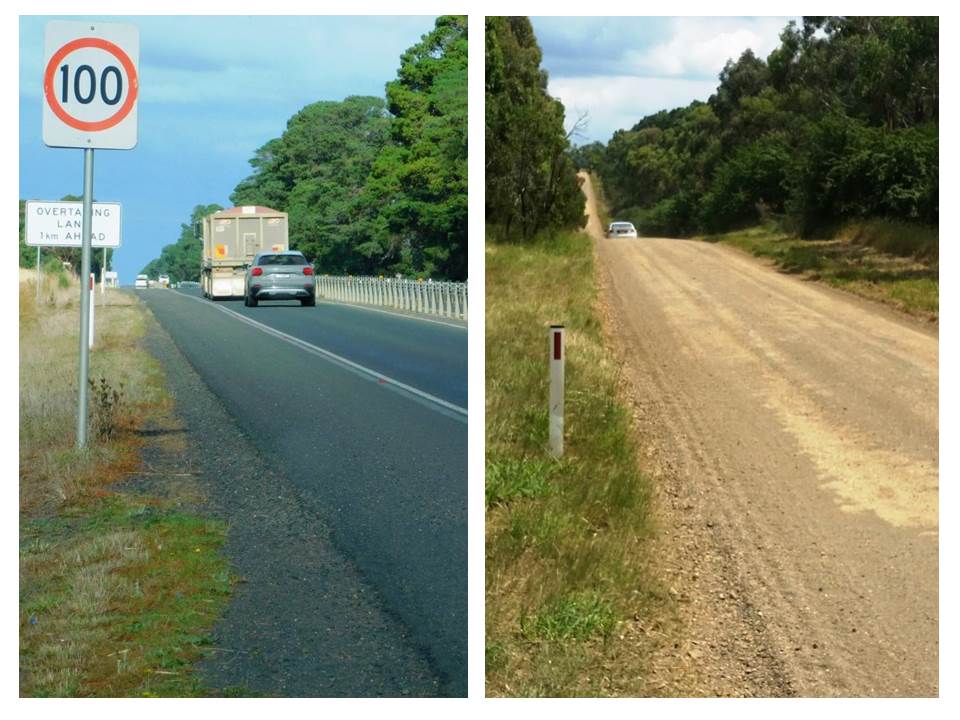
After three years of hitting a brick wall about reducing wildlife road kills and injuries, and ensuring safer conditions for locals who walk, jog, and ride bicycles and horses along a 10km circuit west of Romsey taking in Moffats lane, Black Range road, Kerrie road and Knox road, figure 1, the penny finally dropped. Reducing the maximum speed from the default 100km/hr to an acceptable 40km/hr is currently non-negotiable.
The solution to achieving safer minor rural service roads for wildlife and humans requires local councils like Macedon Ranges Shire Council and state government politicians to demand changes to the existing default speed limit for these roads currently set at 100km per hour.
The Victorian government department which determines default speed limits around the state, VicRoads, gives no recognition to wildlife as a road user so ignores the facts that wildlife are victims of road trauma and wildlife can be involved in vehicle collisions where humans can be injured or killed.
In other words in VicRoads default determinations for speed limits on minor rural roads there is no such thing as coexistence between vehicles and wildlife. Furthermore no matter how many animals are killed and maimed on a road, that outcome does not determine its maximum speed limit. That maximum speed limit is set at 100km/hr by default and is non-negotiable as far as wildlife road kills and injuries are concerned.
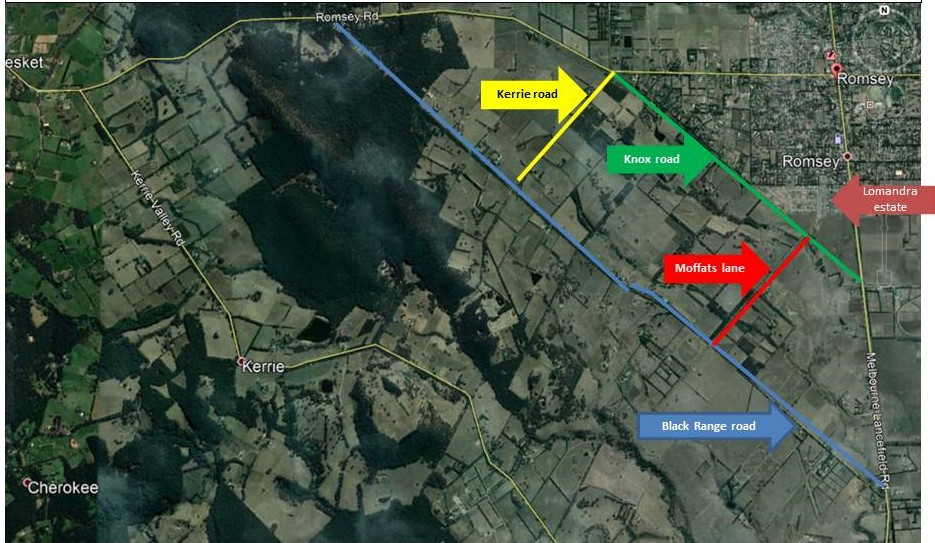
Figure 1: The Moffats lane, Black Range road, Kerrie road, Knox road pedestrian, bike riding, horse riding circuit on minor rural service roads adjacent to the west side of Romsey. The VicRoads default speed limit on the circuit roads is 100km/hr except for Knox road fronting Lomandra housing estate where it is 80km/hr. Design: Patrick Francis.
This reality emerged during another (on-line) meeting in August 2020 with Macedon Ranges Council’s Manager Engineering and Resource Recovery responsible for local roads maintenance, when I was told the Council’s hands were tied, it had no jurisdiction over speed limits and I needed to acquaint myself with the document which did, VicRoad’s “Traffic Engineering Manual Volume 3 – Additional Network Standards & Guidelines Speed Zoning Guidelines Edition 1, June 2017”.
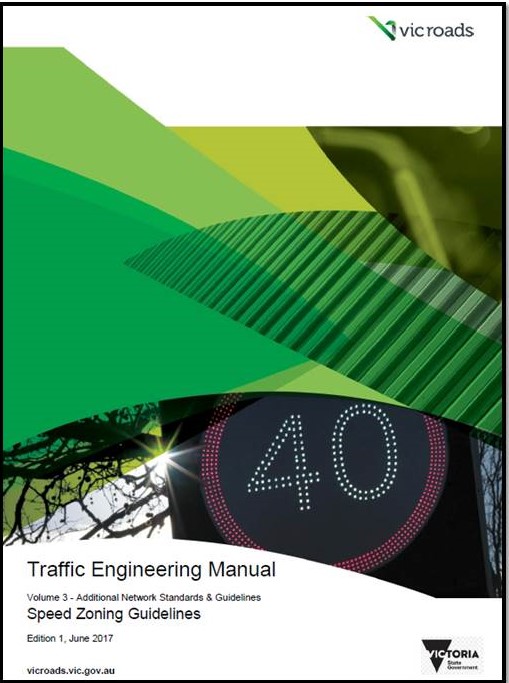
The VicRoads Speed Zoning Guidelines ignore co-existence of wildlife on roads when setting default rural road speed limits.
These so called “Guidelines” are much more than that, they are rules set in stone with default speeds for major and minor rural roads and no one I have approached, councillors, council bureaucrats, and the local state member seem prepared to challenge VicRoads or its responsible minister that coexistence with wildlife on roads is a reality and society entrusts its governments – local state and federal, to protect wildlife and encourage its proliferation.
That VicRoads Speed Zoning Guidelines ignore coexistence with wildlife is incomprehensible given Victoria is the state where:
* The landcare movement began in 1990 and now boasts hundreds of farmer and friends groups all working on improving public and private land biodiversity and environmental health.
* The state government’s own voluntary Land for Wildlife program involves in excess of 5000 properties undertaking initiatives to restore wildlife to private properties and farms across 530,000 hectares.
* Catchment Management Authorities across the state fund programs for landowners, farmers and volunteers to repair degraded environments on public and private land and restore their biodiversity and wildlife populations across thousands of hectares and along biolinks and riparian zones.
* All local governments have environmental policies to protect and enhance native biodiversity including wildlife in their municipalities.
* The state government’s Department of Environment Land Water and Planning (DELWP) has developed a Living with Wildlife Action Plan to ensure wildlife are secure and sustainably managed. One of its aims states“The Victorian community is confident in the government’s actions to protect, conserve and manage wildlife.”
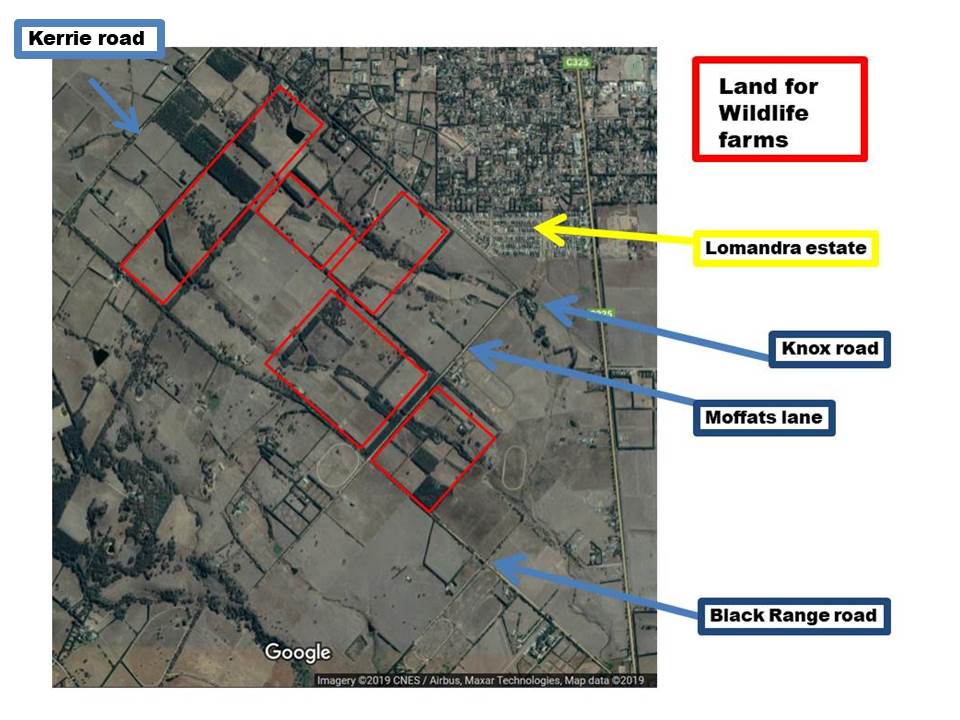
The common threads to all these organisations initiatives is an increasing number of wildlife across the state as more farmers and landowners create and set aside more land for wildlife conservation. Subsequently there are more wildlife/vehicle interactions with road users who are increasing due to population growth in new housing developments particularly in peri-urban Melbourne.
VicRoads default speed limit for minor rural roads, 100km/hr, is antagonist to all these initiatives as wildlife are regularly being killed and injured as a result of drivers travelling at or close to this speed. Insurance companies data on claims involving accidents with wildlife attest to the increasing interaction between drivers and wildlife, table 1.
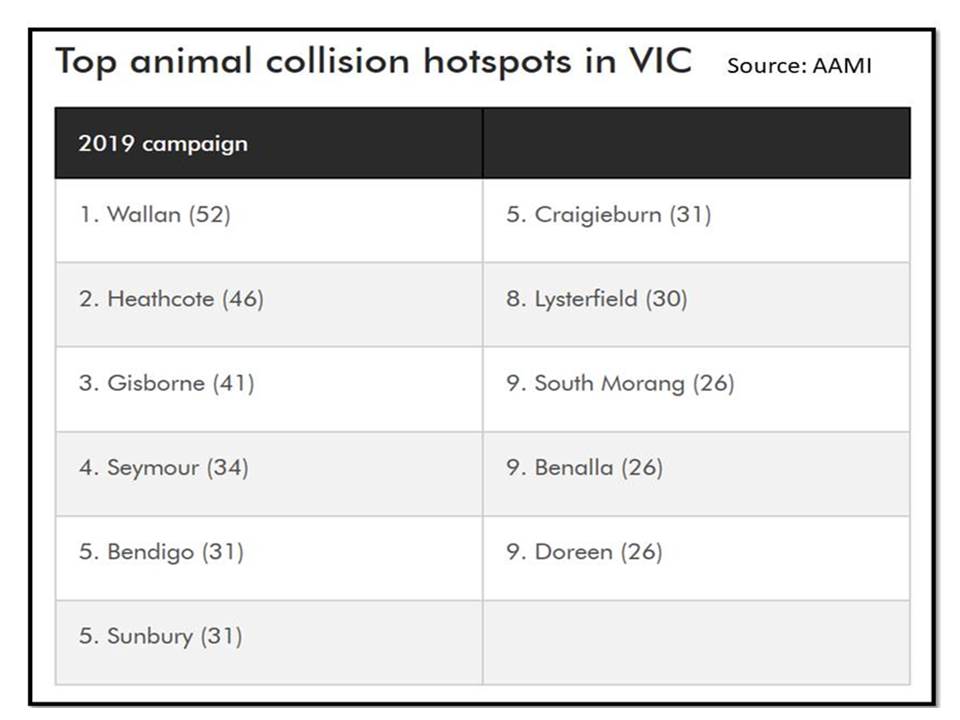
Table 1: AAMI’s 2019 insurance claims for vehicle collisions with wildlife. Most of the incidents are occurring on roads in the peri-urban region. There are no records kept for collisions with wildlife not leading to an insurance claim but most likely killing or injuring the animals involved.
The evidence that VicRoads denies co-existence between wildlife and road users when setting speed limits on minor rural roads and even on particular significant connecting roads between towns comes from the “Speed Zoning Guidelines”. These are the blue print on which decisions are made about maximum speed limits on all roads in the state. Word checking the document reveals the Guidelines make no reference to:
* wildlife
* animals
* road kills
* native vegetation
* forests
* biolinks
* revegetation
* riparian zones
* landcare
* livestock
* kangaroo
* climate change
* greenhouse gas emissions.
In other words VicRoads makes decisions on speed limits completely ignoring anything to do with risk to wildlife and subsequent risk to drivers who might react to avoiding a collision by braking, swerving off the road or into oncoming traffic.
As well, it makes decisions ignoring the concerns of local rural road users many of whom are adjacent landholders and farmers involved in wildlife habitat restoration through landcare and CMA projects and Land for Wildlife. These participants are likely to drive on the local roads at speeds around 40km/hr as they know such a speed means collisions with the wildlife they have spent years supporting can be avoided. The two speeds – the VicRoads default100km/hr and driving to the wildlife conditions at 40k/hr are incompatible and in themselves can lead to road rage, aggressive driving such as tailgating and dangerous overtaking.
None of this is taken into account by VicRoads Speed Zoning Guidelines in deciding speed limits on rural roads.
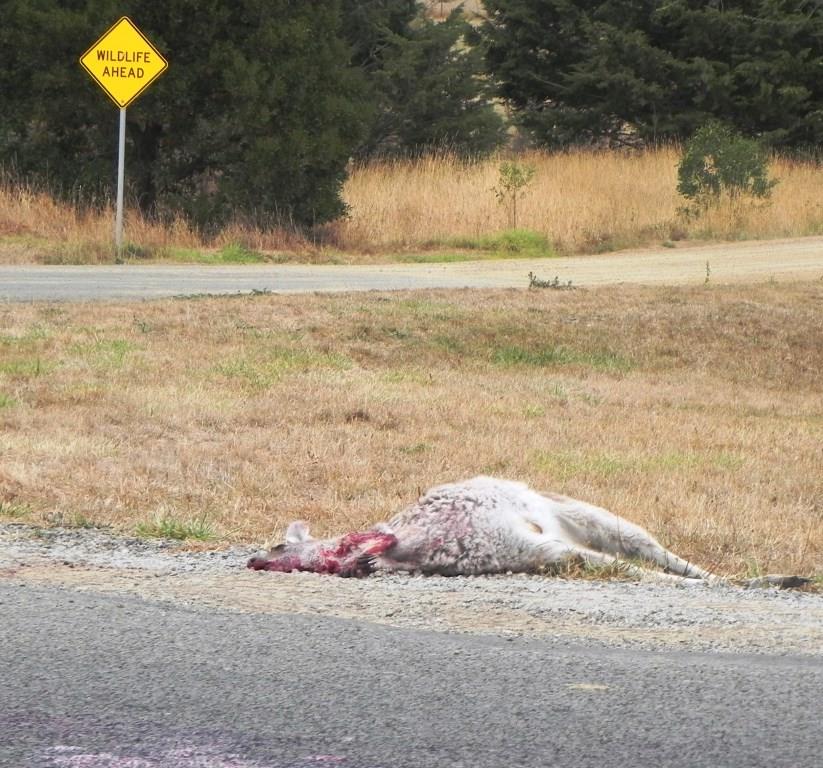
Roadkill on Knox road Romsey. The sign in the background on Moffats lane warns drivers “Wildlife ahead” but few take any notice. The VicRoads mandated speed limit on the gravel Moffats lane is 100km/hr and on bitumen Knox road it is set at 80km/hr, both are too fast to avoid collisions with wildlife which may cross the roads at any time. Photo: Patrick Francis.
So what does VicRoads take into account? “Traffic Engineering Manual Volume 3 – Additional Network Standards & Guidelines Speed Zoning Guidelines Edition 1, June 2017” spells it out very clearly. It states: “The speed zoning principles, …. are categorised under the following key themes for the setting of speed limits:
• Road Safety
• Transport Network Efficiency
• Road User Expectation
• Community Engagement
• Community Wellbeing”
Road Safety
This theme states: “Where vehicle speeds would result in impact forces exceeding human tolerances to vehicle occupants and/or vulnerable road users, then speeds should be managed to minimise the risk of fatal and serious injury.” In this theme wildlife collisions are not considered as important for human safety, they are not mentioned. The Guidelines focus is so narrow it is prepared to assume the wellbeing of wildlife on roads has no importance and that wildlife have no value in themselves or to the community.
Transport Network Efficiency
This theme states: “When determining a speed limit for a road, it should generally be set in accordance with road function and standard of infrastructure. ….When determining speed limits, the objective is to achieve operating speeds that support an efficient network wide outcome. It is essential that decisions do not just focus on isolated sections of road but are made in the context of the overall route and the adjoining road network. Speed limits should be set to support efficient travel on roads that have a primary movement function and discourage inappropriate use of roads and streets that have a primary access or place function.”
The last sentence is telling in the context of the use of Black Range road and Moffats lane as short cuts by an increasing number of drivers to access the new housing estate in Romsey or alternatively to avoid Romsey township altogether to access the Woodend road. These roads have a primary access function for local farmers, they are not highways with primary movement function. The road rage and threatening driver behaviour is a consequence of not having a speed restriction compatible with an access function in association with protecting wildlife.
Road user expectation principles
This reads: “When determining a speed limit, it should be set so that it is consistent with speed limits on roads in a similar environment with similar characteristics and function. Speed limits should be set in a consistent manner…. minimising the number of speed limit changes is a key objective.”
Given roads coexist with natural environment this principle treats wildlife as it they are some sort of inanimate object that do not exhibit natural behaviours. It denies drivers any speed guidance to avoid the possible dangers associated with wildlife suddenly crossing a road. Victoria’s more populated wildlife roads have signs indicating the presence of wildlife with no guidance as to the appropriate speed to avoid a collision just to save the number of speed limit changes, figure 1. This attitude seems irresponsible given the state government’s roles across public safety and wildlife conservation.
Community engagement principle
This reads: “When determining or changing a speed limit, engagement with affected communities and road users shall be undertaken so that expectations and impacts are understood and considered. Engagement is important to be able to gauge the level of support that the community and road users have for speed limit changes. A high level of support and awareness will result in better outcomes for the community through better acceptance of, and compliance with, speed limits.”
This is VicRoads ‘brick wall’ principle when it comes to lowering speed limits to protect wildlife from death and injury. Because the Guidelines do not embrace wildlife existence on roads, community engagement concerning wildlife cannot happen.
Community wellbeing principle
This reads: “Speed limits should be set at a level that supports active transport modes and minimises impacts on amenity.Local residential roads that do not provide a through traffic function generally have low volumes of traffic. In these instances speed limits should be set at a level to enhance amenity and encourage an increased use of active transport modes.”
At first glance this principle reads as if the default 100km/hr limit on minor rural roads is inappropriate for roads exemplified by the Black Range Road, Kerrie road,, Knox road, Moffats lane circuit, simply on the basis of enhancing local user amenity. But if enhancing amenity on minor rural roads is a principle how is it that the default maximum speed limit on them is 100km/hr?
VicRoads could have argued that the default speed limit on minor rural roads is 40km/hr as to meet the community wellbeing principle to cater for local user amenity. If it did this it would have avoided these issues surrounding wildlife road kills and injuries while maintaining its denial of roads coexistence with wildlife.
The default speed limit of 100km/hr for roads outside built-up areas (rural areas) is the VicRoad ace for deflecting any community discussion around reducing speed to prevent wildlife road kills and injuries, figure 1.
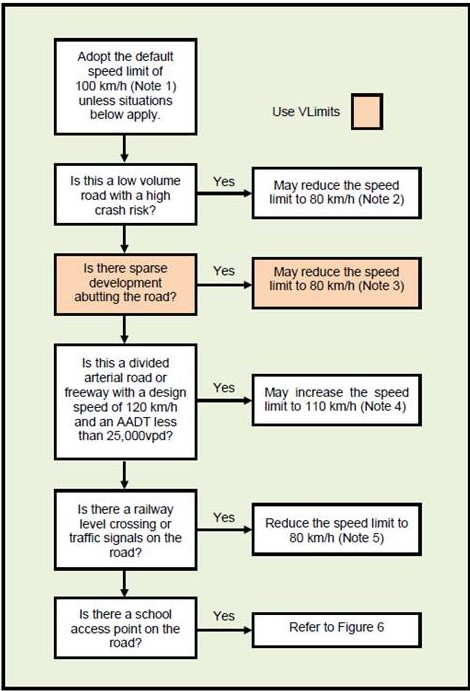
Figure 1: Process for determining speed limits outside built-up areas. Source: Traffic Engineering Manual Volume 3 – Additional Network Standards & Guidelines Speed Zoning Guidelines Edition 1, June 2017, page 22.
How it was determined for minor roads surrounded by a wide range of wildlife population concentrations across rural areas is unknown. VicRoads does recognise there are arguments to change the default speed on sections of roads “where crash risk is high”. Figure 1 refers to VLimits as a tool to help engineers to decide if a low speed limit is appropriate. Access to the tool is not available to the general public.
Given that the Macedon Ranges Shire Council engineering staff I have spoken to have not mentioned that wildlife can be used as a consideration in setting speed limits on local roads it can be assumed VLimits does not take wildlife on or adjacent to roads into account.
VicRoads web site describes VLimits 3.0 as “ an expert system which has been developed as a tool to assist practitioners in determining appropriate speed limits. It aims to reduce the degree of subjectivity associated with the evaluation of speed environments. In Victoria, the process for the determination of speed limits is structured around the following criteria:
- road characteristics
- extent and nature of the abutting development
- road users, their movements and the number of potential conflicts between road users
- crash history and
- seasonal factors.
Vlimits 3.0 takes the user step by step through a series of questions relating to the road environment factors.”
If wildlife welfare and their potential to involve vehicles in accidents is not an allowable input into VLimits then it is not surprising that local council engineers and subsequently Councillors have no avenue through which they can implement change advocated by local residents.
Pedestrian, cyclists, horse rider safety
The Guidelines do not provide allowance to reduce speed on minor rural roads in situations as we have in the Moffats lane/Black Range road circuit. Due to the rising population in Romsey and in particular adjacent to the circuit as a result of a new housing development there are increasing numbers of walkers, joggers, bike riders and horse riders sharing the circuit roads with vehicles.
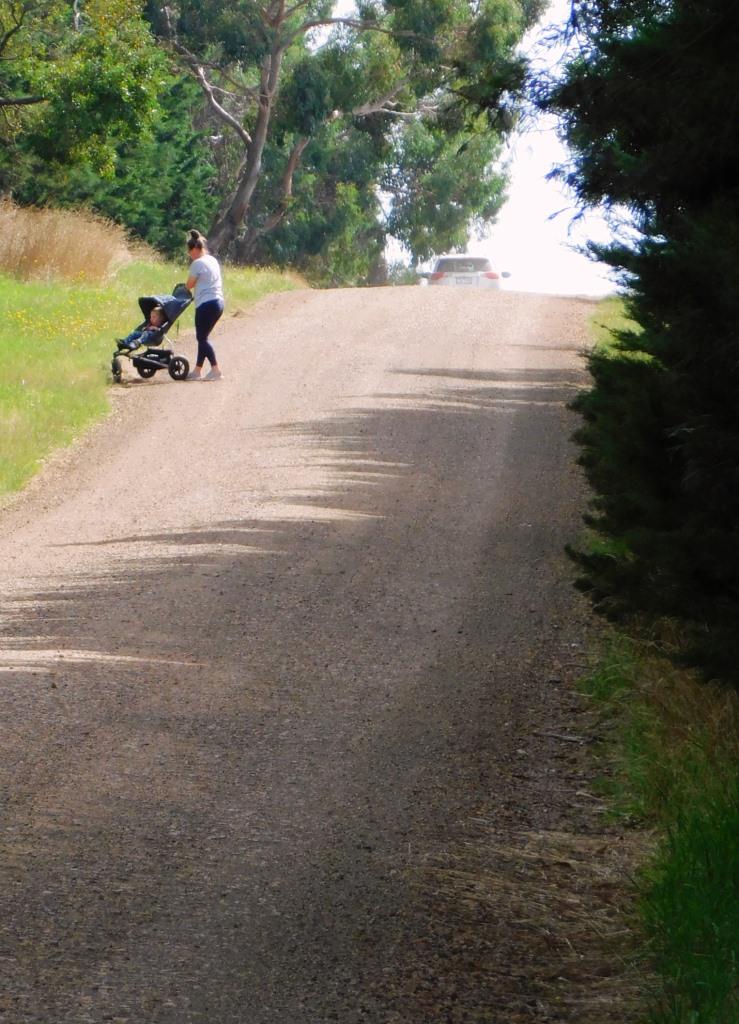
The Guidelines state: “In areas where there are high levels of pedestrian activity or the risk to pedestrians is high, the speed limit …. should be reviewed and a lower speed limit adopted where appropriate…. .”. This statement seems to be suggesting that if the number of vehicles using a road is low such as on the Moffats lane circuit then the danger to pedestrian/bike riders is low from vehicles traveling at the default speed limit.
This is a nonsense argument because for each pedestrian/bike rider interaction with a vehicle travelling at the default limit the risk of harm (collision, stone and dust throw) is extreme. The number of extreme events experienced on a walk/ride along the circuit might be low but not the risk from each event.
The reasons why pedestrian/cyclists/horse riders might be attracted to particular roads is not accounted for by the safety Guidelines. This is an important omission because people moving to towns like Romsey are motivated to do so for a range of reason one being the high quality natural environment that can be experienced. For Romsey residence that natural environment with its wildlife is most easily experienced on the Moffats lane Black Range road circuit.
Why minor rural roads undergo constant maintenance
A feature of minor rural roads management throughout the Macedon Ranges Shire (and possibly across Victoria) is the amount of road grading, re-surfacing and packing undertaken. Given the roads in question such as Moffats lane and Black Range road are service use roads not through traffic use roads and carry relatively light traffic, around 100 and 50 vehicles per day respectively (MRSC survey for one week in July 2020) the amount of maintenance seems excessive. It not only costs rate payers to undertake the work but the heavy machinery involved add more greenhouse gases to the atmosphere which need to be offset by Council if it is to meet greenhouse gas neutral target by 2030.
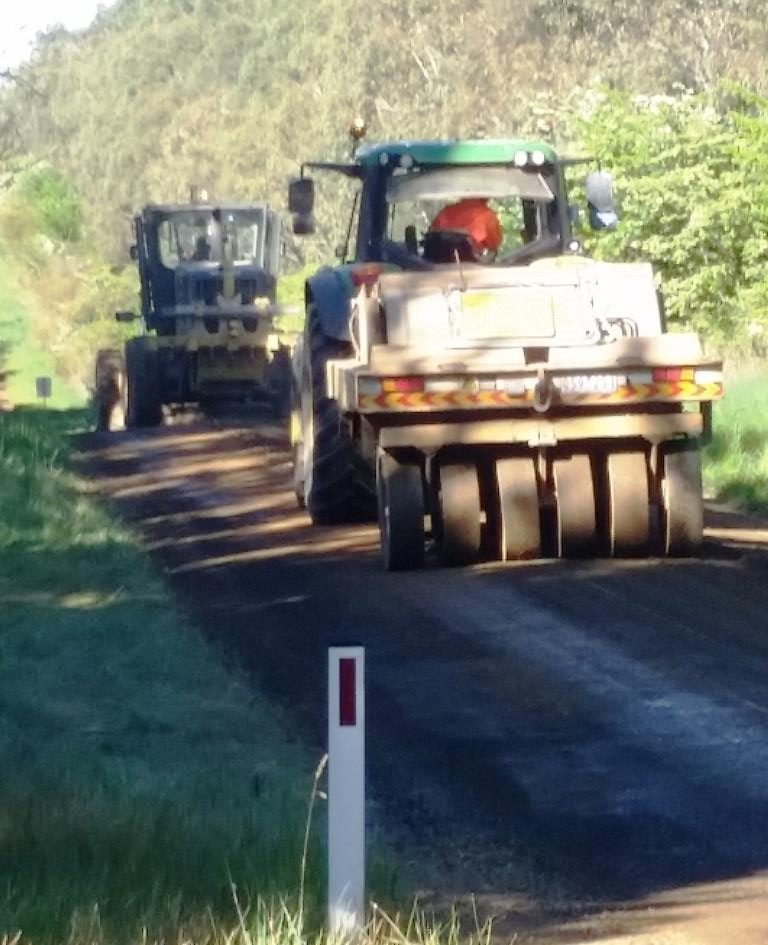
Because minor rural roads have a default 100km/hr speed limit Councils are obligated to maintain a surface safe enough to travel at this speed. The presence of wildlife adjacent to the road has no bearing on this maintenance undertaking even if they are being regularly killed by vehicles. Photo: Patrick Francis.
Locals could travel slower if surface conditions deteriorated with time and this would have a positive flow on effect of helping to reduce wildlife roadkill and keeping other road users such as walkers, bike riders etc. safer. But the penny has dropped on this issue as well. The default speed limit is 100km/hr so it’s Council’s responsibility to maintain the roads in a condition suitable for this speed. And because drivers are secure in the knowledge that the 100km/hr limit applies their expectation is that the road surface and surrounding infrastructure is suitable for this speed.
VicRoads Speed Zoning Guidelines state “Lowering of speed limits should not be used to compensate for sub-standard road infrastructure.”
This suggests Councils have a responsibility to maintain minor rural road surfaces at such a standard that 100km/hr is normal practice. An appropriate maximum speed for co-existence with wildlife using roads has no part in the decision making.
Commenting on an increasing wildlife road kill toll in Tasmania in 2005, Parks and Wildlife officer Nick Mooney who undertook extensive research into roadkill concluded road engineering solutions are futile. The single most important reason for roadkill is road speed, he said.
“The problem is we’re making roads faster at the same time as we’re asking people to slow down.”
Faster speeds mean more greenhouse gas emissions
An unintended consequence of VicRoads default speed limit on minor rural roads and local Councils dedication to ensuring the road surface is suitable for the speed is increased vehicle greenhouse gas emissions. These are a result of road maintenance machinery greenhouse gas emissions and increased emissions as a result of vehicles travelling at higher speeds on these roads.
Research for optimum speed for fuel efficiency and to minimise CO2 emissions is clear that speed below 80km/hr is optimal. For instance:
* A Monash University study “Driving to reduce fuel consumption and improve road safety” by Haworth and Symmons found “The relationship between fuel consumption and average speed … appears to decrease as average speed increases to about 60 km/h to 80 km/ and then increase. … Given the strong relationships between travel speeds, crashes and fuel consumption and emissions, there is a clear case to reduce travel speeds.
* Canadian government research found “ Most cars, vans, pickup trucks and SUVs are most fuel-efficient when they’re travelling between 50 and 80 km per hour”.
* Wikipedia state’s: “The optimal speed (for fuel efficiency) varies with the type of vehicle, although it is usually reported to be between 56 km/h and 80 km/h.”
VicRoads default speed limit for minor rural roads is significantly above that which minimises greenhouse gas emissions from vehicles so is contributing unnecessarily to anthropogenic climate change as well as increasing wildlife road kills and danger to other road users.
In March 2021 the Macedon Ranges Shire Council declared a “Climate Emergency” with the object of achieving net zero greenhouse gas emissions by 2030. In its 2021 draft Local Roads Maintenance Plan, there is no mention of the emergency and no data provided on current and future emissions from road maintenance vehicles. There is no listing of strategies to reduce emissions from these vehicles by reducing the amount of maintenance undertaken in association with educating rate payers that slower speeds minimises damage to gravel road surfaces as well as reducing vehicle emissions.
What happens to speed limits when wildlife and pedestrian safety are accounted for?
If VicRoads speed zoning guidelines took a responsible attitude towards safety of wildlife, pedestrians and minimising greenhouse gas emission on minor rural roads its guideline would be very different. My version of figure 1 is shown in figure 2.

Figure 2: The Patrick Francis version of minor rural roads speed zoning guidelines.
The evidence for introducing the figure 2 guidelines is overwhelming so why aren’t VicRoads and the state government listening. A clue comes from the VicRoads guidelines themselves.
“After having determined the most appropriate speed limits … a review should be conducted to check for consistency of speed limits along each length of road, or across a network of roads. It is important to provide road users with consistent and predictable speed limits to minimise potential confusion.”
So VicRoads bureaucrats contend that a speed limit sign on a minor road is likely to cause drivers confusion when they turn off a highway where the default speed is 100km/hr. Is it driver confusion or disregard of any speed limit? Recent research by the Australian Road Safety Foundation suggest the latter. Its latest driver survey uncovered:
* More than four out of five drivers admit to risky driving behaviour.
* The most common reason for risky behaviour on rural roads was not getting caught.
* More than 25% are more likely to break a road rule in rural areas.
* Most drivers tend not to think about the safety of other road users before getting behind the wheel
* Melbourne drivers believe rural roads are safer than city streets.
Commenting on the research, Roadsafe Goulburn Valley chairman Des Callaghan said wildlife, speed and road quality were all factors in rural road safety. It could also be argued that VicRoads default speed limit for minor rural roads is not assisting road safety, wildlife conservation and pedestrian/riders safety.
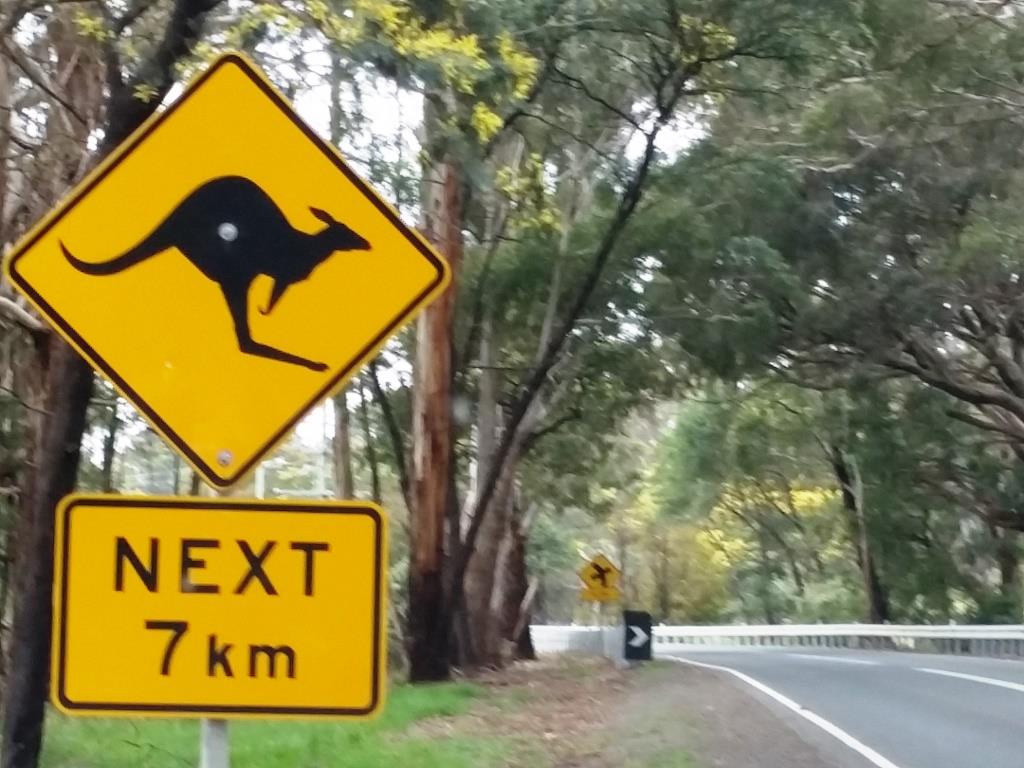
VicRoads fears drivers are unable to cope with changing speed limits and implements “consistent and predictable speed limits” on rural roads where predictability is impossible due to the presence of wildlife. One Tasmanian report noted road kill “…occurs because wildlife and people driving vehicles are on the road simultaneously, and cannot predict the behaviour of one another.” (8) Photo: Patrick Francis.
Is there any government policy protecting wildlife on roads?
Given VicRoads sets speed limits across the state what does the state Department with responsibility for protecting and enhancing Victoria’s wildlife do to ensure road kills and injuries are avoided. It does nothing as it has no policy on this topic.
The Department of Environment, Land, Water and Planning (DEWLP) is the responsible authority for protecting Victoria’s wildlife under the Wildlife Act 1975. To support this act with practical actions DEWLP produced the Living With Wildlife Action Plan which “focuses on actions to protect the welfare of individual animals and native wildlife populations by managing and mitigating risk to populations while balancing human interests… This Action Plan is part of the government’s broader long-term agenda to ensure stronger protection of important biodiversity.”
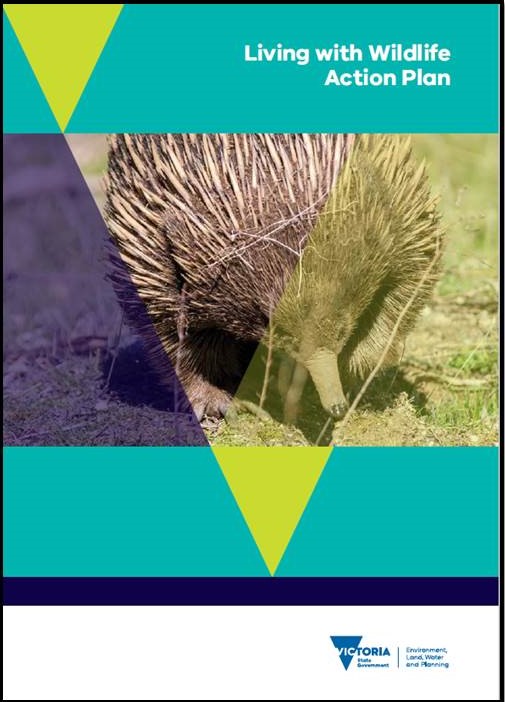
It could be assumed that an action plan to protect wildlife from deaths and injury on roads would address vehicle speed, it doesn’t.
Given this focus and one of the major causes of wildlife death and injury is collisions with vehicles on rural roads it would not be unreasonable to assume the Living With Wildlife Action Plan would address the road kill risk. A word search of the Plan makes no reference to road kill, default speed limits, vehicles, collisions or anything with the high number of animal deaths as a result of collisions with vehicles.
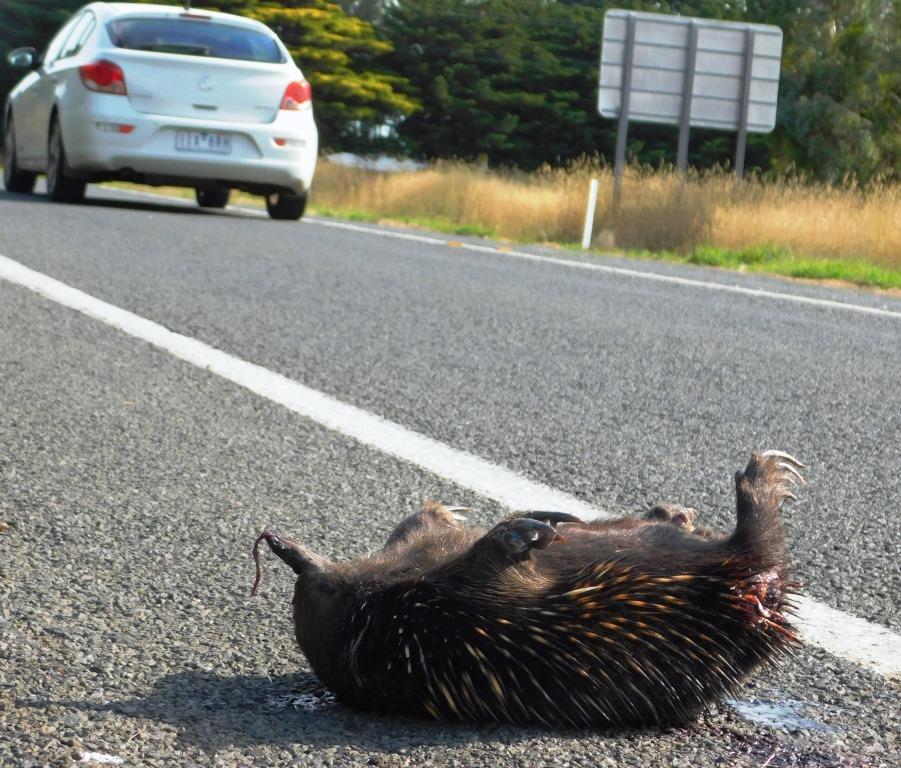
The Plan even states “The government is committed to improving the care and protection of Victoria’s biodiversity, including wildlife and its habitat, through ….interconnected initiatives”. None involve VicRoads or the default speed limit on rural roads.
Under its principle of “Encouraging positive attitudes towards wildlife” there is no mention of road kills and its solution driving at slower speed. The authors contend “by building greater public awareness and understanding of animal behaviour and their requirements across the landscape, it is possible to foster attitudinal and behavioural change that both values and understands improved ways of living with wildlife across Victoria”.
This statement defies published research into wildlife road kills which usually concludes that driver education has little to no impact on reducing attitudes to speed to avoid wildlife road kills and injuries. Even road signs warning of wildlife presence on or adjacent to roads are ignored by most drivers. Research shows the only effective method to reduce driver speed is legally enforced speed limits that are sufficiently low to avoid collisions and/or constructing speed reducing structures such as humps in roads.
The irony of the Living With Wildlife Action Plan relates to its fourth principle “Streamlining assistance for sick, injured and orphaned wildlife”. This contains the Plan’s only mention of involvement of an animal “…being hit by a car”. There is no strategy to prevent collisions happening by reducing speed limits on roads where wildlife is abundant but there is a plan for DEWLP to “create a new online injured wildlife tool to ensure that the community can access the information they need and know who to contact for help regarding sick, injured or orphaned wildlife”.
In other words the DEWLP wildlife action plan won’t implement any strategy to avoid vehicle collisions on roads but when they happen it will help drivers who stop, with accessing the closest wildlife rescuer. It’s the state government’s version of “closing the gate after the horse has bolted”.
How an action plan designed to protect wildlife cannot engage with the major on-going cause of animal deaths and injury – collisions with vehicles travelling at inappropriate speeds, is incomprehensible.
Earth Jurisprudence
If state government legislation is failing wildlife due to road kills and injuries inflicted by drivers travelling too fast on minor rural roads, then a relatively new legal approach has considerable merit.
The Australian Earth Laws Alliance has introduced the concept of Earth Jurisprudence. It’s web site states: “The Australian Earth Laws Alliance draws its inspiration from an emerging theory of law called Earth Jurisprudence – also known as ‘Earth Laws’ or ‘Wild Law’. Earth Jurisprudence stresses human interconnectedness and dependence with the natural world. Recognition of human interconnectedness with nature is a prerequisite for ecological sustainability and should be recognised as the foundation of our legal system.
“The current legal system is human-centred and has been shaped to promote infinite economic growth and industrial development.” As well the legal system gives no rights to wildlife on or crossing roads – there are no laws associsted with killing or injuring wildlife on roads, they are simply considered a driving hazard or risk. In contrast farmers have laws to prevent killing or injuring native animals on their properties.
The Alliance contends the current legal system effectively treats the environment as a resource that belongs to human beings and can be exploited for human benefit or on roads their welfare can be ignored.
“Environmental law and other regulatory measures play an important role in curving the excesses of this system. However, the current rate of environmental destruction demands a new approach to environmental protection. To this end, Earth Jurisprudence seeks to catalyse a shift in law from human-centeredness to a recognition of our interconnectedness with nature. It contends quite plainly that either the human community and the natural world will go into the future as a single community, or we will both perish.”
Earth Jurisprudence promotes a number of key principles including the intrinsic right of nature to exist and flourish. This is not happening on Victorian roads, particularly minor rural roads.
Take home message
The last word why the state government’s VicRoads and DEWLP should be co-operating and working with local governments and landowners to prevent wildlife road kills by re-thinking default speed limits on rural roads goes to Marc Bekoff, professor emeritus of ecology and evolutionary biology at the University of Colorado, Boulder, USA. In his 2010 essay “When animals meet cars, the cars win” he writes “The reasons we need to change our behaviour are simple. Current rates of wildlife road mortality are neither sustainable for biodiversity nor a healthy reflection of our interactions with the environment and the animals who try to coexist with us. Our driving habits demonstrate the prevailing unconscious state in which we move about. Driving mindlessly and ignoring lifeless bodies on roads decreases our humanity and lends itself to a culture of indifference …. and demeans us as a species.” (7)
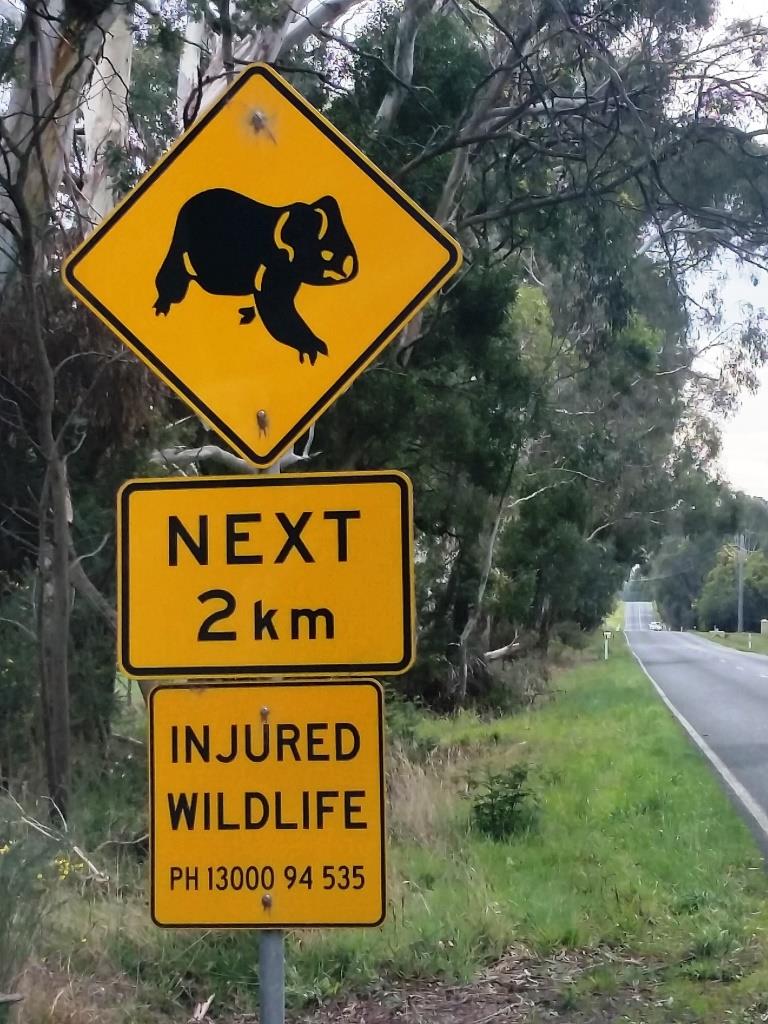
Signs that indicate wildlife are present on and around roads are becoming more common as the state’s wildlife populations increase. There is no guidance to drivers as to what speed is legally reasonable to avoid killing or injuring wildlife on or crossing the road. Ironically the only guidance given by the government to drivers reading this sign is who to contact after there is a collision with an animal. Photo: Patrick Francis
References:
1 http://vlimits.com.au/about.aspx
2 http://www.vlimits.com.au/Default.aspx
3 https://acrs.org.au/files/arsrpe/RS010036.pdf
5 https://en.wikipedia.org/wiki/Energy-efficient_driving
8 https://eprints.utas.edu.au/3027/1/Reducing_Wildlife_RoadKill_Tasmania.pdf
9 https://www.examiner.com.au/story/629547/tasmanias-roadkill-problem/

